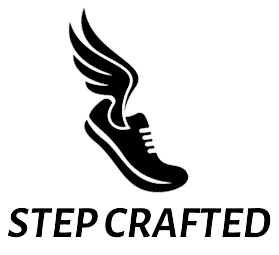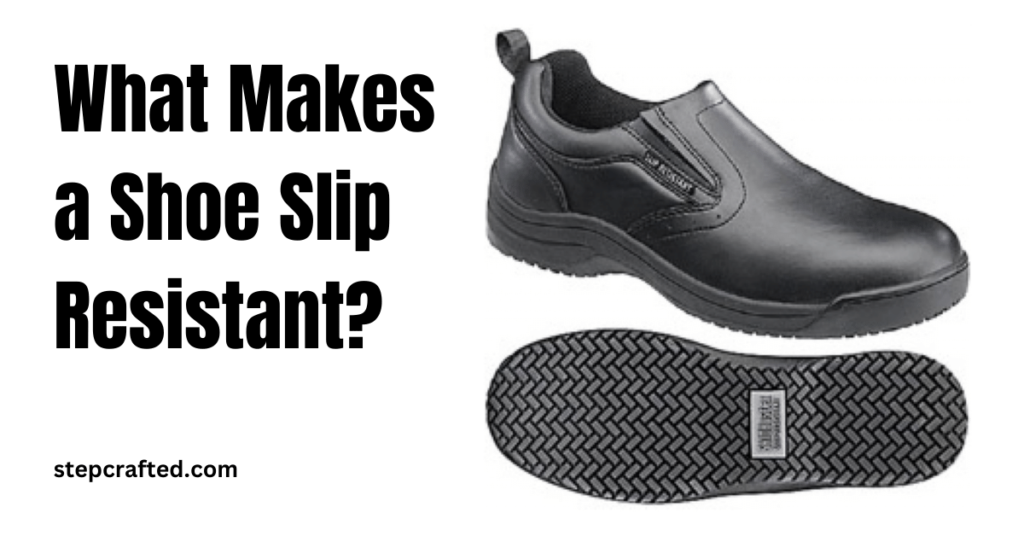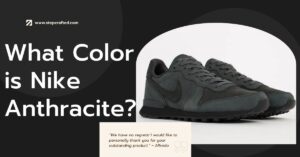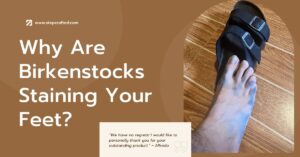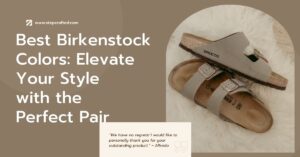What Are Non-Slip Shoes and How Do They Work?
What Makes a Shoe Slip Resistant? Non-slip shoes are specially designed footwear that provide extra traction and grip on slippery surfaces, helping to prevent falls and injuries. They work by using outsoles made from a softer rubber compound that can more effectively grip the floor, even when it’s wet or oily.
Contents
ToggleThe outsole patterns are also critical; they are typically made with deeper grooves and specific patterns that channel liquids away from the bottom of the shoe, allowing the rubber to make direct contact with the ground.
This design ensures that the wearer has better control and stability while walking on slick surfaces, making non-slip shoes a common requirement in industries like healthcare and food service, where spills and slippery floors are common.
What Are Slip-Resistant Shoes?
Slip-resistant shoes are designed with specialized soles that provide enhanced grip and traction on wet or slippery surfaces.
They feature materials and tread patterns aimed at reducing the risk of slips and falls, making them ideal for environments where spills and slick floors are common, such as kitchens, hospitals, and industrial settings. These shoes are crucial for safety in workplaces with high slip risks.
Who Can Benefit from a Non-Slip Pair?
- Importance for Workplace Safety: Slip-resistant shoes are crucial for preventing falls on slick surfaces, and are highly beneficial for employees in hazardous areas.
- Versatility for Outdoor Activities: These shoes ensure stability in various weather conditions, perfect for outdoor enthusiasts.
- Recommended for Specific Professions: Ideal for those in the construction, food service, and healthcare sectors, where the risk of workplace injuries is higher due to slippery conditions.
- Key for Occupational Safety Roles: Essential for safety officers and consultants focusing on minimizing workplace hazards.
- Utility for the General Public: Suitable for anyone seeking extra traction in daily footwear or during specific outdoor activities.
- Protective for Families: Advisable for parents or caretakers of young children and the elderly, aiming to reduce slip and fall incidents.
- Enhancement for Sports and Recreation: Beneficial for individuals engaged in hiking, running, or sports that require improved grip on diverse terrains.
How Do Non-Slip Shoes Work?
Non-slip shoes function by employing soles made from a softer, more flexible rubber compound that increases friction and grip on slippery surfaces.
The tread design is crucial, featuring unique patterns that channel away moisture and ensure more sole surface area contacts the ground, effectively reducing slip risks.
This combination of materials and design allows for better traction on wet or oily floors, enhancing safety in environments prone to spills or slick conditions.
Key Features of Non-Slip Shoes
The key features of non-slip shoes include soles made of a soft rubber compound for enhanced traction, deep tread patterns to channel liquids away and prevent hydroplaning, and a design that maximizes contact with the floor to improve stability on wet and oily surfaces.
These features combine to significantly reduce the risk of slips and falls in hazardous environments.
Materials
In the production of non-slip work footwear, the choice of materials plays a critical role in ensuring safety and efficiency on various surfaces.
Typically, the best non-slip shoes feature outsoles crafted from premium or synthetic rubber. This material choice is key to their ability to provide a strong grip on surfaces that are wet, oily, or greasy.
The softness of the rubber on the exterior part of the sole is instrumental in offering the slip-resistant qualities needed for secure footing in challenging environments.
Design
The design of slip-resistant work shoes significantly contributes to their effectiveness in preventing slips. These shoes are engineered with specific features that enhance their grip across various terrains, incorporating a blend of design elements tailored to improve slip resistance.
This approach allows for a wide range of shoe styles to achieve reliable traction, ensuring safety without compromising on aesthetic preferences. Through careful design, these shoes effectively combine functionality with style, offering secure footing in slippery conditions across diverse work environments.
Pattern
Non-slip soles are characterized by their unique design, featuring a textured, bumpy surface with interlocking tread patterns that enhance grip and stability.
These patterns are specifically engineered to expel liquids from under the shoe, preventing accumulation and ensuring a secure foothold in various conditions.
The distinct enclosed tread design efficiently directs liquid away, maintaining traction by leveraging the rough texture of the sole to safeguard against slips. This combination of design elements is crucial for maintaining stability and safety on slick surfaces.
Other Non-Slip Shoe Features: What Makes a Shoe Slip Resistant?
- Hexagonal Tread Patterns: Slip-resistant shoes often feature hexagonal patterns on the outsoles for improved grip.
- EVA Rubber Soles: These shoes typically have soles made from soft, yet sturdy EVA rubber for durability and slip resistance.
- Padded Collars: Enhanced with thick padding around the collars for extra protection of the foot.
- Water-Resistant Uppers: The upper part is commonly water-resistant or waterproof, crafted from materials like waterproof leather.
- Roomy Toe Boxes: Designed with spacious toe boxes to ensure maximum comfort throughout the day.
- Ideal for Long Hours: Perfect for individuals who spend long periods standing or walking on wet, slippery surfaces, providing stability and comfort while reducing fatigue and strain for all-day wear.
How to Tell If Shoes Are Non-Slip?
To determine if shoes are non-slip, examine the following aspects:
- Look for a textured sole: Non-slip shoes typically have soles with a distinct pattern, such as hexagonal or circular designs, to channel away liquids and increase traction.
- Check the material: Soles made from soft, flexible rubber are common in non-slip footwear as they offer better grip on slick surfaces.
- Inspect for tread depth: Deeper treads on the sole are a sign of slip resistance, as they improve the shoe’s ability to grip the floor.
- Search for certifications: Some shoes might have labels or markings indicating they meet industry standards for slip resistance.
- Consider the shoe design: Features like a supportive footbed, padded collars, and water-resistant materials also contribute to the shoe’s overall safety performance on slippery surfaces.
They Are Labeled as “Slip-Resistant”
One clear indicator that shoes are designed for enhanced safety on slippery surfaces is if they are explicitly labeled as “slip-resistant.” This label means the footwear has undergone specific testing to meet industry standards for traction on wet or oily floors.
Manufacturers often include this designation on the packaging, tags, or directly imprinted on the sole of the shoe, providing consumers with straightforward verification of the product’s intended safety features.
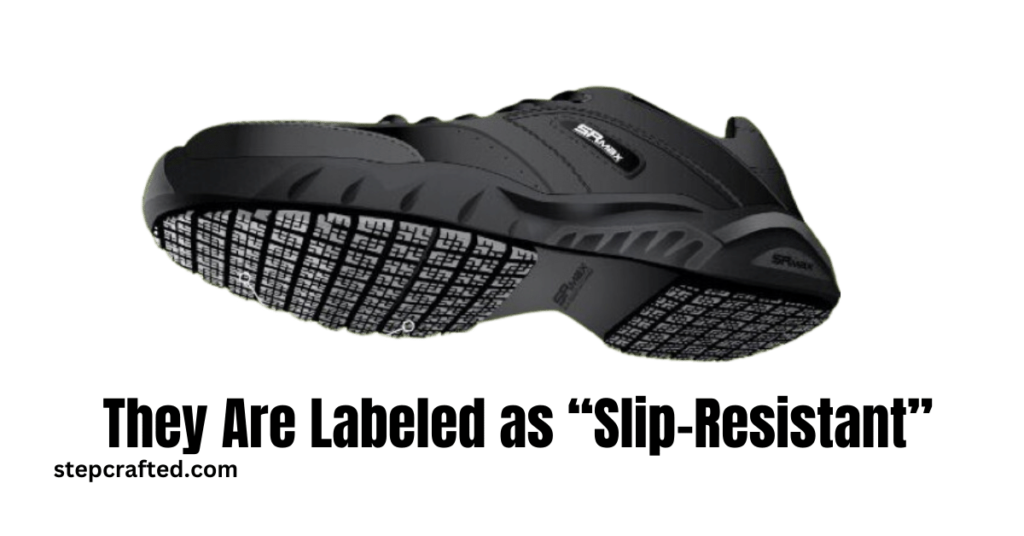
Such labeling is a direct assurance from the manufacturer that the shoes have been engineered to reduce the risk of slips, making them a preferred choice for professionals in industries where slip-and-fall accidents are a concern.
Examine the Tread Patterns
Evaluating the sole’s tread pattern is crucial for identifying a shoe’s slip-resistant capabilities. Outsoles typically feature patterns such as circles, hexagons, or unique designs that enhance friction and ensure a solid grip across different terrains, effectively preventing water entrapment.
The effectiveness of slip resistance tends to increase with the intricacy of these patterns. A lack of or minimal tread design usually signifies poor traction, suggesting the footwear might not provide adequate grip.
Conversely, a well-defined pattern, often made from rubber or similar gripping materials, indicates a design optimized for slip resistance, contributing to safer movement on potentially slippery surfaces.
Check the Design of the Soles
The design of the shoe sole plays a significant role in its ability to prevent slipping. Even if shoes are marked as slip-resistant, it’s important to examine their soles closely before making a purchase.
Look for shoes with soles made of durable EVA rubber, which should have a slightly curved edge. EVA is a synthetic material that resembles a mix of resin and foam, commonly used in both the middle and bottom layers of non-slip footwear for added safety and comfort.
This material and sole shape combination is key to ensuring better stability and grip on various surfaces.
Wear or Walk in Them
When shopping for non-slip shoes in a physical store, it’s a good idea to try them out right there. Although you might not find a wet surface to test them on, a smooth and polished store floor can serve as a suitable alternative.
Simply wear the shoes and walk around to get a feel for their fit and how they interact with the floor. Store floors are often slippery enough to give you a sense of the shoes’ grip and slip resistance.
You can also check the slip resistance by touching the sole of the shoe with your hand. If the bottom of the shoe feels too smooth, it’s likely not designed to resist slipping effectively.
This tactile test can help you assess the safety features of the shoes before you decide to buy them.
How to Make Shoes Slip-Resistant?
To make shoes slip-resistant, you can apply adhesive grip pads or anti-slip tapes to the soles, use a spray-on coating designed for enhancing traction, or scuff the bottoms with sandpaper to create more texture.
Another DIY method is to draw patterns with a hot glue gun on the sole, which provides additional grip. These simple techniques can significantly improve the slip resistance of your shoes on slick surfaces.
Apply Traction Spray
Applying traction spray to your shoe outsoles enhances slip resistance. If your shoes are wearing down and the soles are getting too smooth, using traction spray can restore their grip on slippery surfaces.
Spray Hairspray on Your Outsoles
You can also improve shoe traction by spraying hairspray on the outsoles and gently rubbing it in. This inexpensive method effectively enhances slip resistance and adds a shiny finish to the shoes.
Add a Mixture of Rubber Glue and Salt
Create a grip-enhancing mixture by combining equal parts of rubber glue and salt. Spread this blend evenly on your shoe outsoles and allow it to dry. This straightforward method adds extra traction to your shoes.
Make Grooves in Your Soles
Carving grooves into your shoe outsoles can enhance slip resistance. These carved lines on the soles act as a gripping pattern, significantly reducing the risk of slipping.
Use Ice Grips
Ice grip, similar to the material used in rollerblade wheels, is an adhesive substance that can be added to shoe outsoles. It effectively enhances slip resistance by providing a strong, non-stick surface that improves traction on slippery surfaces.
Rub Your Shoes with Sandpaper
Using sandpaper to rub the shoe outsoles, as you would for smoothing a surface before applying varnish or paint, can increase friction in the soles. This added friction improves grip and slip resistance.
Re-Sole Your Shoes
Another choice is to resole your shoes, but this typically requires a visit to a shoe repair shop for the necessary fix.
Set Up a New Rubber Base
You can use rubber tape to cover worn-out shoe soles, ensuring that there’s no exposed metal. This method allows you to maintain good traction, as shoes with rubber soles are known for their slip-resistant qualities.
Use Puff Paint
Using puff paint, readily available at children’s art and craft stores or online, can enhance slip resistance. Simply apply a thin layer of puff paint to the shoe outsoles, creating a rough and anti-slip surface.
Let Them Wear Down
Walking in your shoes on uneven surfaces over time can naturally wear down the soles, making them rougher. This gradual change may result in an increased level of slip resistance.
A Pair of Slip-Resistant Shoes Has Many Uses
Slip-resistant shoes have versatile applications, serving as crucial footwear for professionals in industries prone to slippery surfaces.
They are also valuable for outdoor activities, offering stability in diverse weather conditions.
Beyond work and outdoor pursuits, slip-resistant shoes ensure comfort and safety for everyday wear, making them a valuable addition to any wardrobe.
Anti-Slip Shoes Are Versatile
Anti-slip shoes showcase their versatility by addressing safety concerns in various settings. They are indispensable for workers navigating slippery floors in industries like healthcare, hospitality, and food service.
These shoes also provide hikers, runners, and athletes with surefootedness on uneven terrains and challenging weather conditions. Beyond professional and outdoor use, anti-slip footwear delivers everyday comfort, making them ideal for individuals of all ages.
Whether in wet kitchens, rugged trails, or daily routines, these shoes offer a balance of safety, stability, and comfort, making them a versatile choice for diverse activities.
Risks of Not Wearing Slip-Resistant Shoes
Not wearing slip-resistant shoes poses significant risks, particularly in workplaces prone to spills or wet conditions.
Without them, individuals face a higher risk of slipping and falling, leading to injuries, medical expenses, and even legal liabilities.
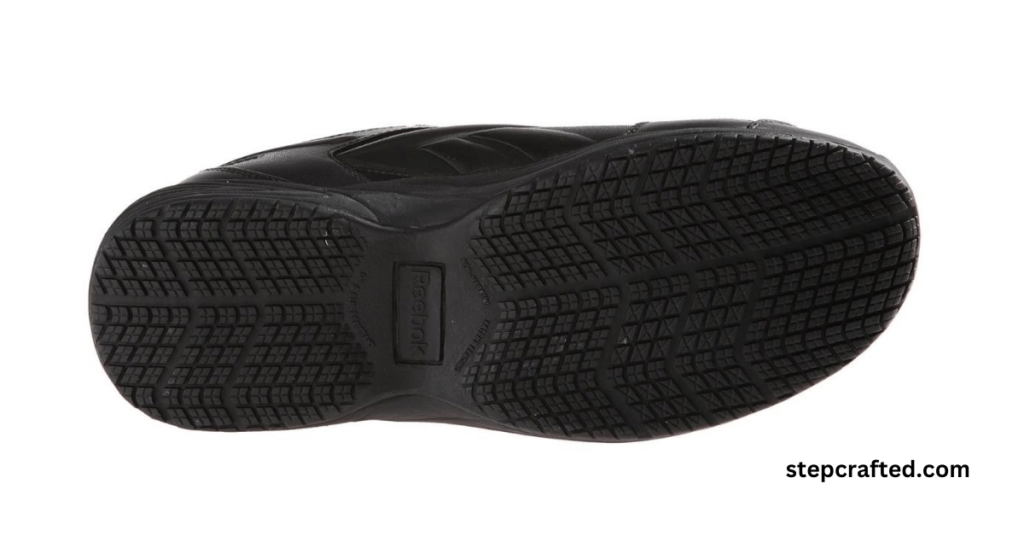
The absence of slip-resistant footwear compromises safety and can result in accidents that impact both individuals and employers.
Broken Bones
Slips can lead to broken bones, especially as we age, with factors like weight and arthritis increasing the risk.
Hip fractures, which result from falls, take longer to heal and can lead to loss of independence. Wearing slip-resistant shoes is a preventive measure to avoid these consequences.
Head Injury
Failure to wear anti-slip shoes when needed can result in head injuries, with one in four such cases proving fatal.
These injuries can also lead to lasting brain damage or paralysis. While some injuries may be minor and recoverable, it’s safer to protect oneself by wearing suitable anti-slip footwear.
Internal Organ Damage
Not using slip-resistant shoes can lead to internal organ damage that may not be immediately visible on an X-ray but manifests days later.
Severe slips and falls can result in a ruptured spleen, leading to significant internal bleeding that often proves fatal without prompt medical intervention.
Back Injury
Slips, trips, and falls frequently cause back injuries, with spinal surgery being a common procedure in the USA. It’s an outcome to avoid, making it essential to wear non-slip shoes to reduce the risk of such accidents.
Other Injuries
Not using slip-resistant shoes can lead to various injuries like cuts, scratches, broken wrists or ankles, and concussions.
Additionally, the fear of falling can cause people to withdraw from enjoyable activities and become isolated, potentially leading to depression. Wearing is crucial for preventing these adverse outcomes. slip-resistant footwear
Stay Safe & Firmly Grounded in a Pair of Premium Non-Slip Shoes
Safety and stability should never be compromised, and premium non-slip shoes are the solution. These shoes offer unparalleled protection against slips, trips, and falls, safeguarding you from injuries and their consequences.
Whether you’re in a high-risk workplace or enjoying outdoor adventures, non-slip shoes keep you firmly grounded. They prevent fractures, head injuries, and internal organ damage, providing peace of mind.
Beyond physical well-being, they preserve your independence and mental health by reducing the fear of falling. Don’t underestimate the importance of slip-resistant footwear; it’s a small investment for your safety, health, and quality of life. Stay safe and confidently navigate any surface with premium non-slip shoes.
How Can I Tell If My Shoes Are Slip-Resistant?
To determine if your shoes are slip-resistant, check for distinctive tread patterns on the outsoles. Slip-resistant shoes often have hexagonal or circular patterns designed to enhance traction.
Additionally, look for labels or markings indicating “slip-resistant” on the shoes. Testing them on a smooth, polished surface can also help assess their grip.
Is Slip-Resistance Specified?
Yes, slip resistance is typically specified for shoes designed to provide this feature. Manufacturers often label such footwear as “slip-resistant” or “non-slip,” making it clear that the shoes are intended to offer improved traction on slippery surfaces. This specification helps consumers identify and choose shoes that meet their safety needs.
What Does the Shoe’s Sole Look Like?
The sole of a slip-resistant shoe typically has a unique tread pattern. This pattern includes shapes like hexagons or circles, designed to improve traction.
The sole’s textured elements enhance grip, reducing the likelihood of slipping on slippery or wet surfaces. The sole should exhibit a noticeable and purposeful design for slip resistance.
The Ideal Non-Slip Work Shoe
The ideal non-slip work shoe combines safety and comfort. It features a slip-resistant sole with deep tread patterns, providing excellent traction on wet or oily surfaces.
The shoe should also have a cushioned insole, supportive arch, and roomy toe box for comfort during long hours of work, ensuring both safety and wearability.
Why Non-Slip Shoes Are Vital For Workers
Non-slip shoes are vital for workers because they prevent accidents in environments prone to spills or slippery surfaces. These shoes reduce the risk of slips and falls, ensuring employee safety.
They also minimize workplace injuries, medical expenses, and potential legal liabilities, making them a crucial investment for both workers and employers.
4 Tips For Choosing Non-Slip Shoes
In addition to altering your current footwear, selecting the appropriate non-slip shoes is crucial, especially for workplaces or activities that require top-notch safety. Here are four tips to help you choose the ideal non-slip shoes:
1. A Workplace with Non-Slip Shoes
If your job involves working on slippery surfaces, like in a restaurant or hospital, focus on non-slip shoes with outstanding traction. Seek specialized footwear tailored to your specific industry.
2. Test Your Work Environment
Assess your workplace or usage areas for surface types and potential hazards. Determine the necessary level of slip resistance based on these conditions.
3. Suitable Material for Shoes
Opt for shoes crafted from slip-resistant materials like rubber, neoprene, or high-quality synthetics known for their excellent traction.
4. Safety Comes First
While style matters, prioritize safety in your non-slip shoe selection. Ensure they have a proper fit and offer sufficient support to minimize the risk of injuries.
FAQs
How to Make Shoes Non-Slip for Restaurants?
To make shoes non-slip for restaurant environments, you can apply a few practical techniques. Adding a layer of grip through adhesive products like non-slip pads or spray-on coatings directly to the soles can significantly improve traction.
Another method involves scoring the bottoms with a rough surface like sandpaper to create additional grip. Some also recommend using a hot glue gun to apply patterns on the soles, which can enhance slip resistance.
These solutions are cost-effective and can be easily implemented to prevent slips and falls in slick kitchen or dining areas.
How to Make Slippers Less Slippery?
To make slippers less slippery, you can apply anti-slip grips or traction pads available at many stores, which stick to the bottom of the slippers. Another DIY method is to use puff paint or hot glue to create textured patterns on the soles.
For a more traditional approach, sewing non-slip fabric patches onto the bottoms can also provide extra traction. These simple fixes can significantly reduce the risk of slips and falls on smooth surfaces at home.
How to Make Tennis Shoes Non-Slip?
To make tennis shoes non-slip, consider applying a traction spray designed specifically for shoe soles to enhance grip. Alternatively, you can adhere non-slip pads to the bottom of the shoes.
Scuffing the soles on rough surfaces like concrete or using sandpaper to create a textured pattern can also improve slip resistance.
These methods can effectively increase the safety of tennis shoes on slippery surfaces, making them more suitable for various activities.
How to Make Shoes Non-Slip on Various Surfaces?
To enhance shoe traction on various surfaces, you can use a few effective methods. Applying anti-slip soles or grip pads, which are specifically designed to adhere to the bottom of shoes, can significantly improve slip resistance.
Another approach is to roughen the soles with sandpaper, creating a textured surface that grips better. For a DIY solution, applying a layer of adhesive materials like hot glue or puff paint in patterns can also increase friction.
These methods can be tailored to different types of shoes and surfaces, ensuring safer movement across slippery floors, wet grounds, or uneven terrains.
How to Make Shoes Non-Slip on Ice?
To improve traction on ice, attaching ice grips or cleats to your shoes can provide a significant increase in stability by digging into the ice as you walk. Another option is to use specialized non-slip soles designed for icy conditions.
For a DIY solution, you can wrap your shoes with a layer of duct tape or apply screw-in studs specifically made for shoe soles to enhance grip on slippery surfaces.
These methods aim to prevent slips and falls by increasing the contact friction between the shoe and the icy surface.
How Do I know if my Shoes are Slip-Resistant?
Feel how they fit and how your foot moves on the floor. Shop floors are typically slippery, and you will quickly determine the shoe’s slip resistance level. Another way to identify the slip resistance of the shoe is to run your hand over the outsole. If the sole is too sleek, shoes aren’t slip-resistant.
How Do I Make my Shoes Slip-Resistant?
Steps to Make Shoes Slip-Resistant
- Put nonslip bathtub appliques on the soles.
- Stick adhesive bandages on the ball and sole of each shoe.
- Attach double-sided tape to the soles.
- Buy some anti-slip spray.
What is the Difference Between Nonslip and Slip-Resistant Shoes?
Slip-resistant safety shoes differ from non-slip-rated shoes as their soles are typically made of rubber or similar materials, and their unique tread patterns can better grip wet, slick, or oily floors which results in a much more stable work environment
Does Rubber Sole Mean Slip-Resistant?
All slip-resistant shoes have rubber soles, but not all rubber soles are slip-resistant. The best outsoles for a slip-resistant shoe are made with soft rubber that can go against oil and grease and must be treated.
The tread is the grooves in the outsole that contribute to the grip and friction of a non-slip shoe.
